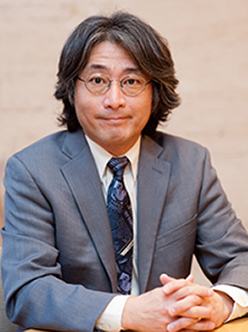Quantum universe explored in Hans Bethe Lecture
By Linda B. Glaser

The universe was once much smaller than the size of an atom. Small things mattered in this small universe, where quantum physics dominated the scene.
To understand how the much larger universe works today, major quantum puzzles must be solved. In Cornell's 2015 Hans Bethe lecture, “The Quantum Universe,” Hitoshi Murayama will explore why the recently discovered Higgs boson keeps us from evaporating in a nanosecond and how mysterious dark matter can hold the galaxy together. And what is the very beginning of the universe?
The free public lecture will be held Wednesday, Oct. 21, at 7:30 p.m. in Schwartz Auditorium, Rockefeller Hall.
Murayama is a theoretical particle physicist who also works on many aspects of cosmology and astrophysics. A professor of physics at the University of California, Berkeley, since 2000, he is also the founding director of the Kavli Institute for the Physics and Mathematics of the Universe at the University of Tokyo and has served as its director since 2007. He is a fellow of the American Physical Society and of the American Academy of Arts and Sciences. He recently delivered a speech at United Nations headquarters about how science unites people and brings peace.
As part of the Hans Bethe Lecture series, Murayama will also present the physics colloquium, “When a Symmetry Breaks," Oct. 19 at 4 pm in Schwartz Auditorium; and a Laboratory for Elementary-Particle Physics seminar, “Goldstone Bosons without Lorentz Invariance," Tuesday, Oct. 20, at 1:30 p.m. in Room 401 Physical Sciences Building.
The Hans Bethe Lectures, established by the Department of Physics and the College of Arts and Sciences, honor Bethe, who was a Cornell professor of physics from 1936 until his death in 2005. Bethe won the Nobel Prize in physics in 1967 for his description of the nuclear processes that power the sun.
Linda B. Glaser is a staff writer for the College of Arts and Sciences.
Media Contact
Get Cornell news delivered right to your inbox.
Subscribe